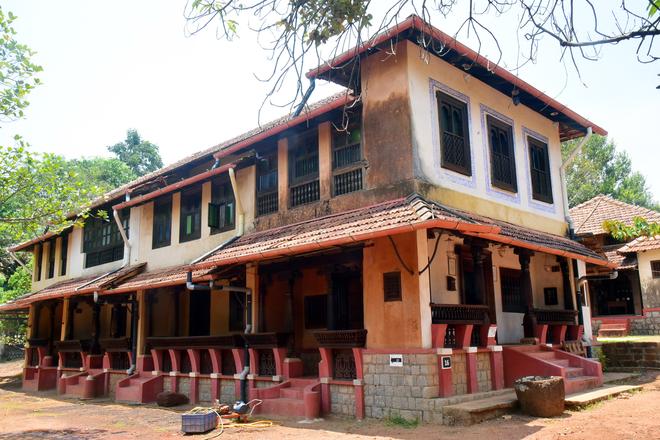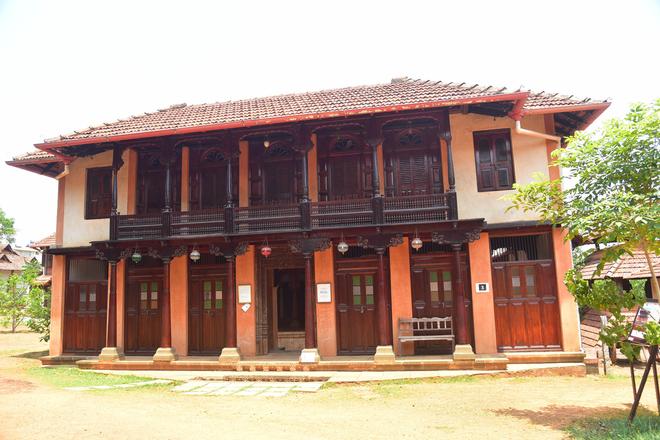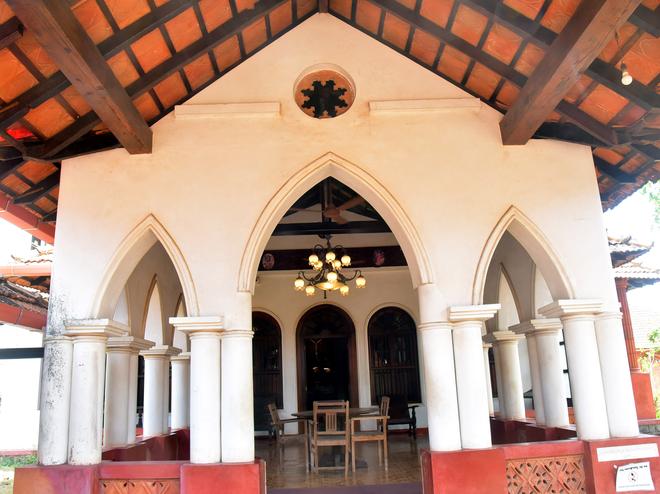
Mention of a museum conjures up the picture of a building housing rare articles. But Hasta Shilpa Heritage Village Museum changes one’s notion of scale, with exhibits comprising life-size buildings, mainly traditional houses and shrines.
Located in the education hub of Manipal in Udupi district of Karnataka, the Hasta Shilpa Heritage Village is the brainchild of late Vijayanath Shenoy (1934-2017), a banker and resident of Udupi. Spread over seven acres on Manipal-Alevoor Road, the open air museum is a tribute to the rich construction tradition of the southern peninsula. Showcasing Indian heritage, culture, and artefacts, Hasta Shilpa is a museum of traditional houses, textiles, utensils, crafts, toys and furniture.
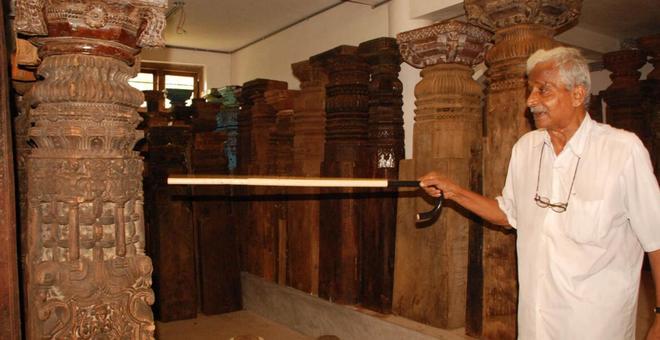
How it all began
The seeds of Hasta Shilpa were sown, albeit unknowingly, when Vijayanath began looking for designs and materials from old houses in nearby areas to build his own house in traditional style in 1990. As he started to construct the house by fetching material from different places, he was disheartened to see many old and heritage houses being brought down, either owing to owners’ inability to maintain them or to build new structures.
An urge to protect invaluable pieces of history for the next generation led Vijayanath to start restoring such structures, not in their original location, but at Manipal. Piece by piece, he collected heritage structures, mainly houses, and reassembled them in the heritage village. The cost of each structure was at least four times more than the original cost of construction because of various stages of their reconstruction, right from documentation, dismantling, transportation and the final restoration.
The topography of the land, given on lease by the district administration to Hasta Shilpa Trust, resembles a typical rural setting, thereby taking the visitors to yesteryears. Vijayanath also documented many of the lost classical and folk traditions for future generations with the hope that they would inspire young people, just as they had fired his own imagination.
At present, Hasta Shilpa Heritage Village Museum has 11 heritage structures, eight traditional shrines, three museums and 40-odd shops. If one is keen to take in every detail, even a full day (10 a.m. to 5 p.m. with the gate closing at 3.45 p.m., Tuesday to Sunday) may not be enough.
An increase in the numbers of footfalls, including educational tours, indicate the growing popularity of the village, as well as the keen interest among people to know their heritage.
The Sringeri house
Among the structure, the Sringeri House of a priest from Sringeri with a pavilion on the ground floor and a viewing gallery on the first floor overlooking the road, catches one’s attention as one enters the village. Minute details, including the priest’s study table with oil lamp stand, have been restored.
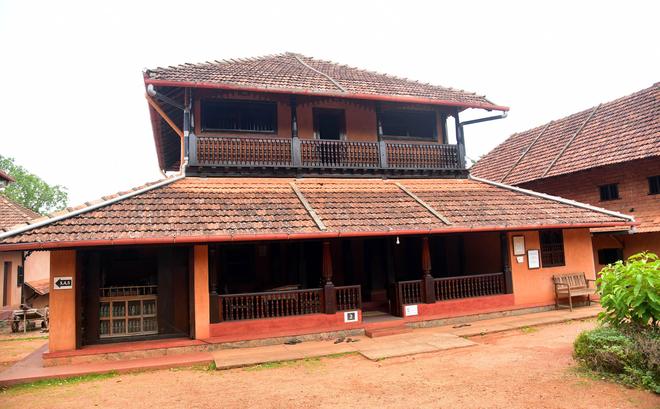
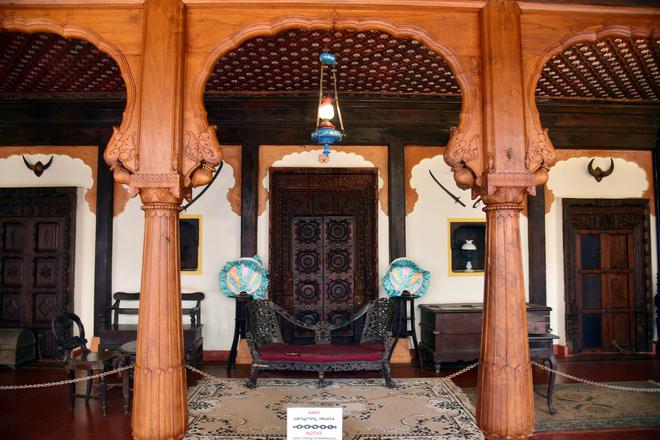
The Darbar Hall of Mudhol Palace, influenced by similar architecture in Rajasthan and crafted locally with teak wood, built by the Ghorpades in Bagalkot district, is another attraction. It has a water trough to wash feet before entering the courtyard while unique carvings on the main doorway add grandeur to the structure. Royal insignia of Mudhol hounds, that the royalty nurtured, is an attraction.
Kamal Mahal of Kukanoor (1341 AD) is perhaps one of the oldest structures to be preserved in the village. The palace is the only wooden specimen of pre-Vijayanagara era that has a 10-layer wooden assembly to support a large, column-free central space. It has Kinnala paintings at the uppermost level, and Mysuru paintings on the left and the right sides of the entrance wall.
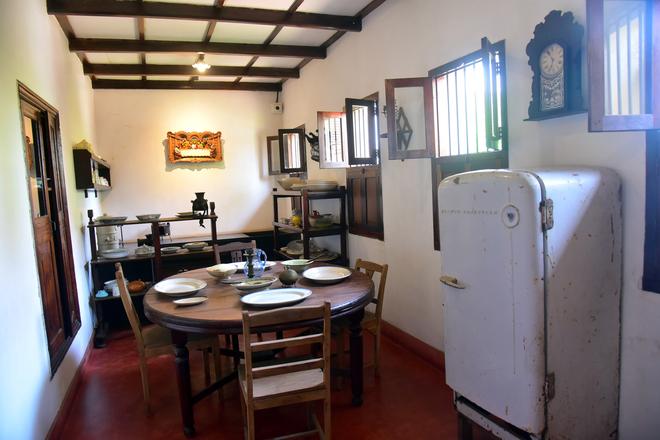
A Christian House of Mangaluru, inspired by Roman Gothic architecture, is another attraction. The house has a front portico replacing the traditional jagali (seating area), a modern kitchen and rare fluted terracotta columned verandah.
Trading houses
Hungaracutta Bansaale Mane, with Bansaale (meaning a trading establishment-cum-residence), is an example of several such structures across coastal Karnataka. Hungaracutta, at the mouth of Swarna and Seetha rivers near Brahmavara, had been a thriving port town till 19th century that lost relevance after construction of bridges across the rivers. While business transactions were conducted in the front two levels, display and storage of the merchandise was on the left and right side of the courtyard. The trader resided across the courtyard at the rear, and a first floor housed visiting traders.
The Veerashaiva Jungama mutt of Puchamogaru in Dakshina Kannada district is believed to be of 16th century vintage. Visiting Jangamas from north Karnataka found the isolated village in a valley a good place to meditate and spiritual discourse, and built the mutt. The structure has intricate carvings on the foor of the main hall while huge pillars support the upper jagali of the hall.
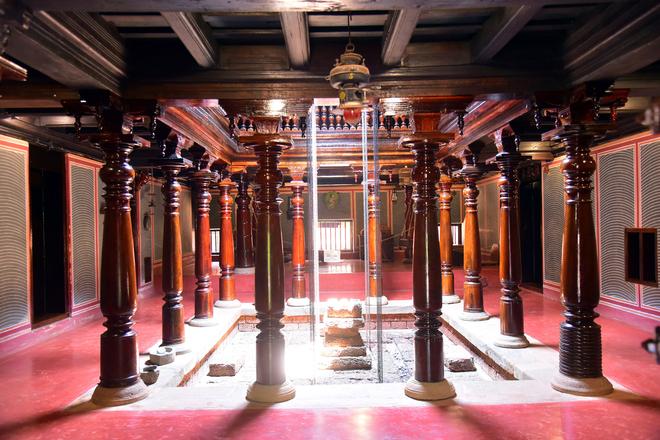
Kunjur Chowki Mane is an example of the architectural style of Kerala with the structure following a mandala (a grid). The structure has a chowki (courtyard), a traditional kitchen, uniquely ornate ceiling with different flowers, and low windows in the entire house.
The rare Kavi Kale
The rare art, Kavi Kale, can be seen at the Vaderahobli House, originally built by a Karantha family in Vaderahobli in Kundapura. It is a rectangular block with pillared two-tier verandah running along the length on both the faces of the house.
On the other hand, the Yerukone House, built in the 19th century, indicates the shift from palatial houses to construction of smaller houses following disintegration of joint families. The families built new houses of small sizes in the old style, thereby preserving the family heritage. The Yerukone House has all the features of the Hebbagilu Chavadi.
Harkur Olaginamane is said to be have been built in 1605 by a Bunt family in Harkur, Kundapura taluk. The house features various agricultural equipment and tools, Kambala accessories, pattas (a large wooden storage box), bronze pot and wooden buttermilk churner, paintings of Kalighat, glass, michrome and Madhubani.
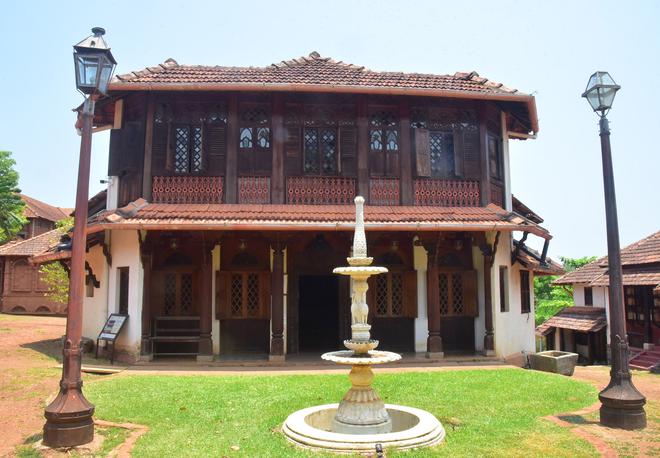
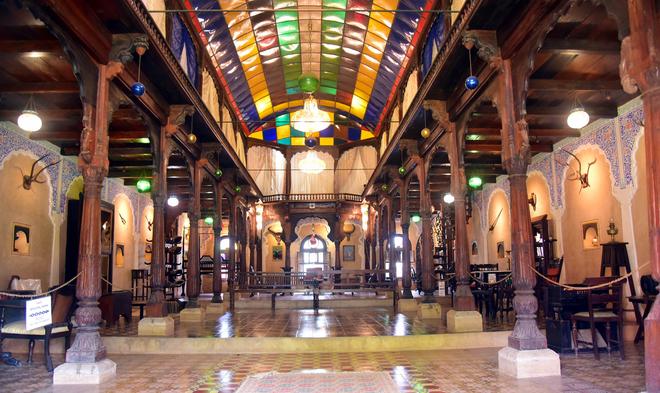
Besides these structures, the village museum also has Miyar House, Peshwa Wada, Bazaar Street, Deccani Nawab Mahal, Museum of Bastar Tribal Art, Museum of Folk Deities, Vishnu Mandir, Vidya Mandir, Bhatkal Navayath Muslim House, Byndoor-Nelyadi House and Harihara Mandir.
The entry fee of ₹300 per adult and ₹150 for children aged above 11 and senior citizens goes towards maintenance and upkeep of the museum. Concession is available for students of educational institutions if they visit in a group of 50 or more.
